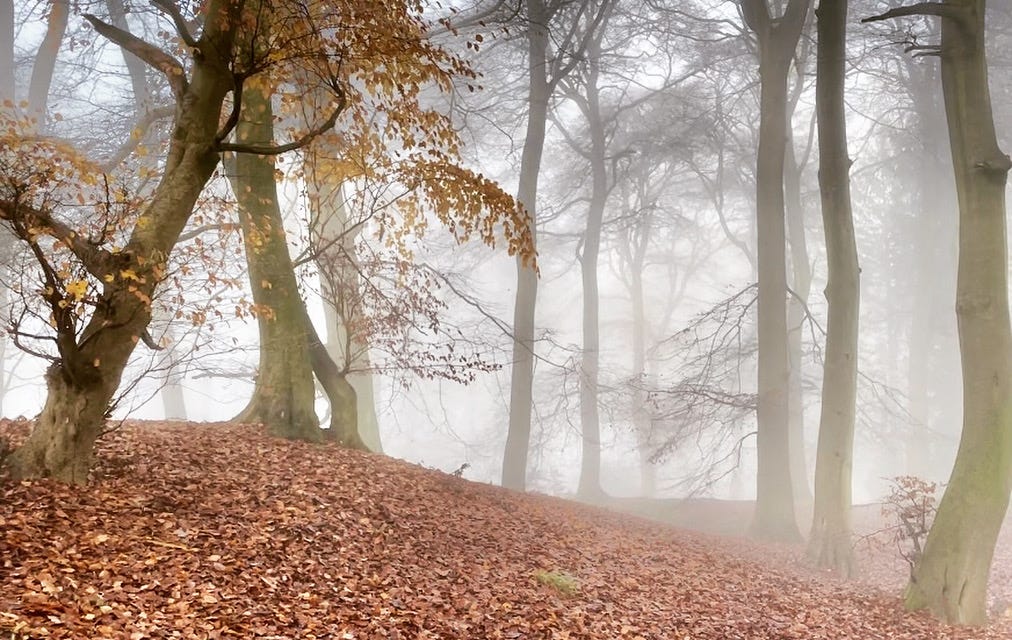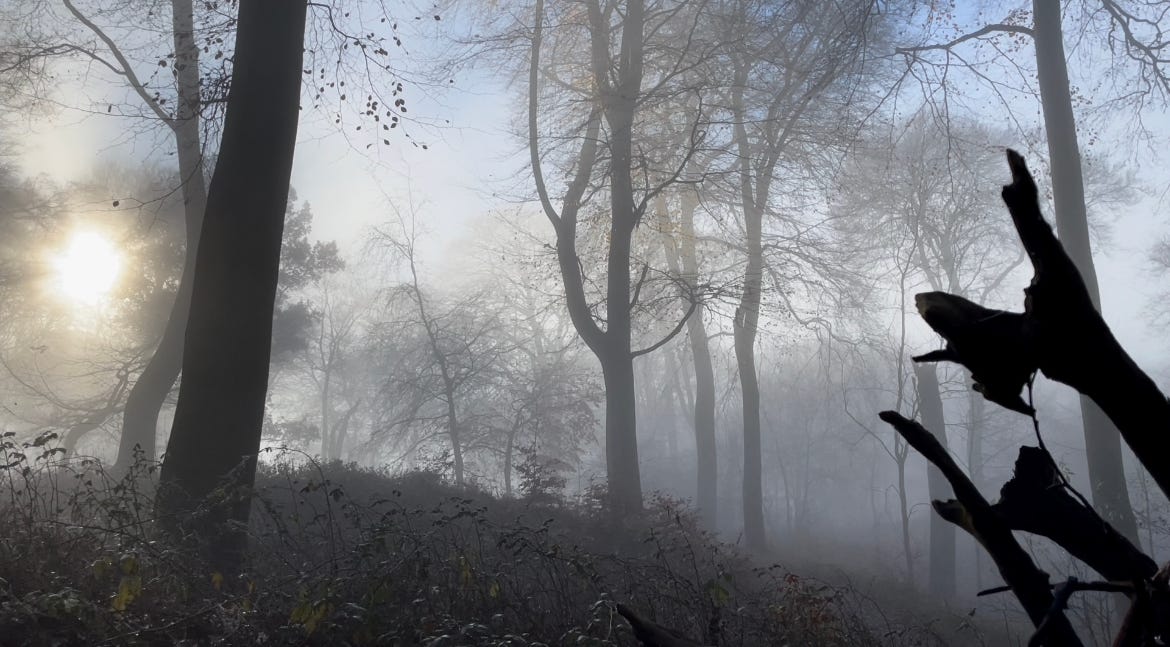Hill Forts in the Fog
Annette had done her weather and walk recce perfectly. Starting and ending at an excellent local hostelry, via a hillfort, we gathered for a country stride and Christmas lunch.
I write this weekly newsletter to share how the micro seasons evolve through a typical year, with weather obviously dominating that narrative. The mild autumn has been quickly replaced with the icy grip of winter and thick fog added to the mix. It isn’t the nicest to walk in, the cold can quickly get through all those layers of clothing and seep into your bones.
But, all was not lost as our route was uphill, past the llamas, who induce either alarm or delight! Building up a head of steam, we walked and talked our way along a footpath that meets the Ridgeway National Trail (en route between the market towns of Princes Risborough and Wendover), and up into Pulpit wood and hillfort country.
An Iron Age mystery
There are over 3,000 structures that can be classified as hillforts across the UK. In the Chilterns, you will find an impressive 22. Built in the Iron Age, between 1200 B.C. and 600 B.C., depending on a whole range of factors. Pulpit hillfort is an impressive 3,000 years old. Roughly.
As the name implies, the earthworks were typically located on hilltops and used as a place of refuge, possibly defence by Iron Age people who could gather with their animals and possessions behind the circular banks and ditches. There could have also been wooden structures associated with these forts, visible for miles around. The encroaching, iconic beech trees are a fairly recent addition.
Now, very much a part of the landscape, some sites more prominent, some are almost forgotten, whilst others have the benefit of interpretation, visiting with an archaeologist was a bonus!
I am reminded of lockdown
What Dr Wendy Morrison doesn’t know about hillforts, is not worth knowing: “these banks would have been higher, these ditches deeper, jumps for emphasis - imagine the palisade walls above you, a round house offering protection over there, whilst the signal fires would have burnt bright and been visible all the way to Ivinghoe Beacon.”
Without a guide, they are simply lumps and bumps on a cold hilltop.
I tried to image how quiet it must been…a deep silence that makes a ringing in your ears, star-filled nights, a crackling fire, the cold. The excitement of seeing friends. The isolation. Sounds like Lockdown to me!
Winter is the best time to see the hillforts, the ground cover died back, the earthworks emerging through the layers of leaves. Visiting in the fog was extra special.
I am grateful this route was chosen as we left the glimmers of blue sky and hilltop sunshine to descend back through the cold fog and our welcome plates of delicious local Christmas lunch.
Links that you need
Discover Beacons of the Past with the Chilterns Conservation Board that has been delivering an innovative, engaging project of discovery, conservation and enjoyment of the many Chilterns’ Iron Age hillforts and their prehistoric chalk landscapes.
Serving the best local sausages and hearty post-walk meals, the Three Crowns at Askett is a good refreshment option. There is limited parking in the village, so please park considerately.
The Ridgeway National Trail skirts around the base of the hill and through the pretty Grangelands and ‘old Kimble Rifle Range’, home of the juniper bush and another speciality of the Chilterns, the large roman snail. Well spotted Elaine!
Here is a short circular walk for you to follow up to the hillfort.




